
Our Insights
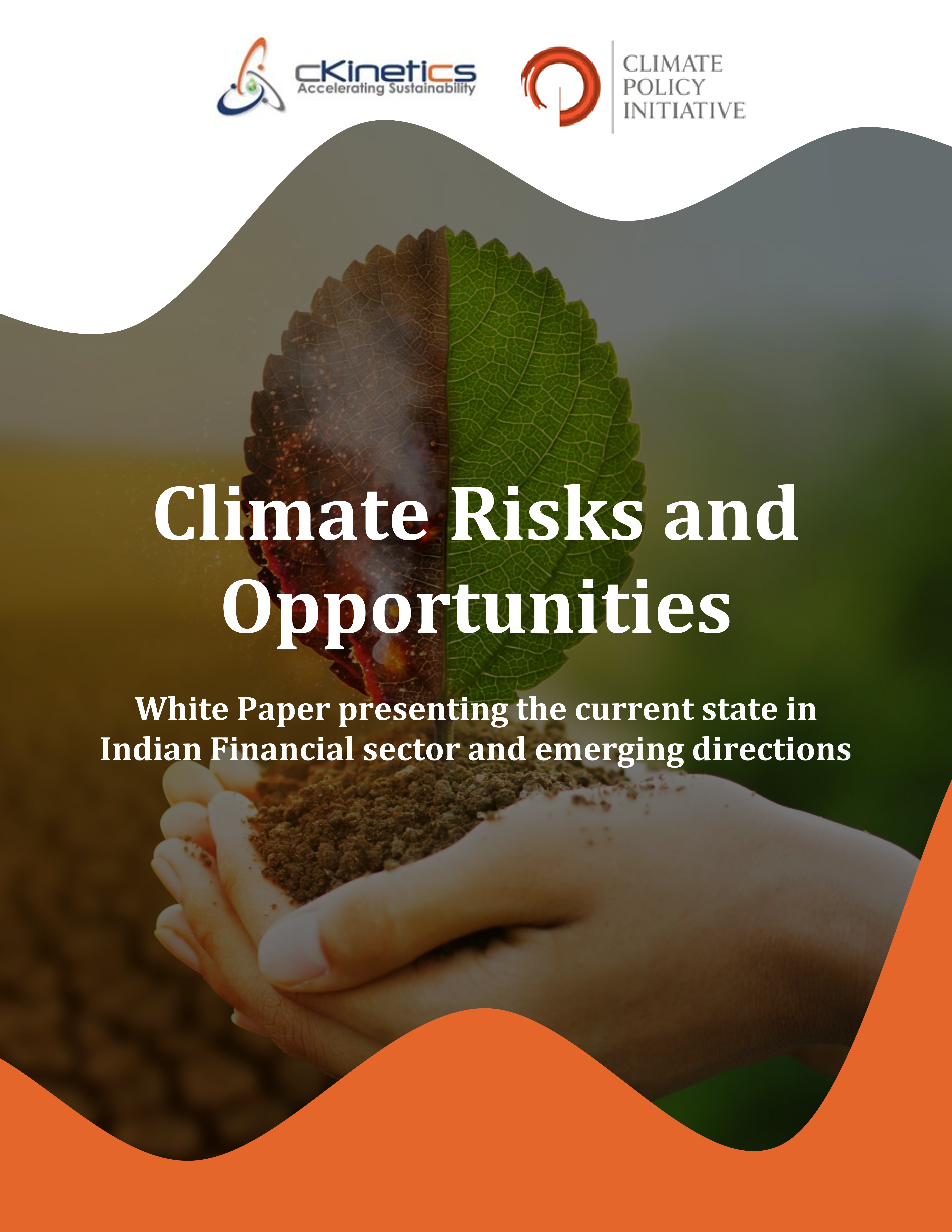
Climate risk manifests in two ways. Physical Risks cause direct harm to assets or disrupt Industry / company value chains. And Transition Risks arise from the overall shift to a low carbon economy through changes in policy, technology and market sentiment. Both impair asset values and credit quality of loans and investments from banks, financial institutions, and capital markets. Apart from credit quality, climate risks also have an impact on market and operational risks. Given the above context, this paper aims to look at how climate risks impact financial markets – banking, capital markets, and insurance - and the opportunities this presents for investments and product innovation.
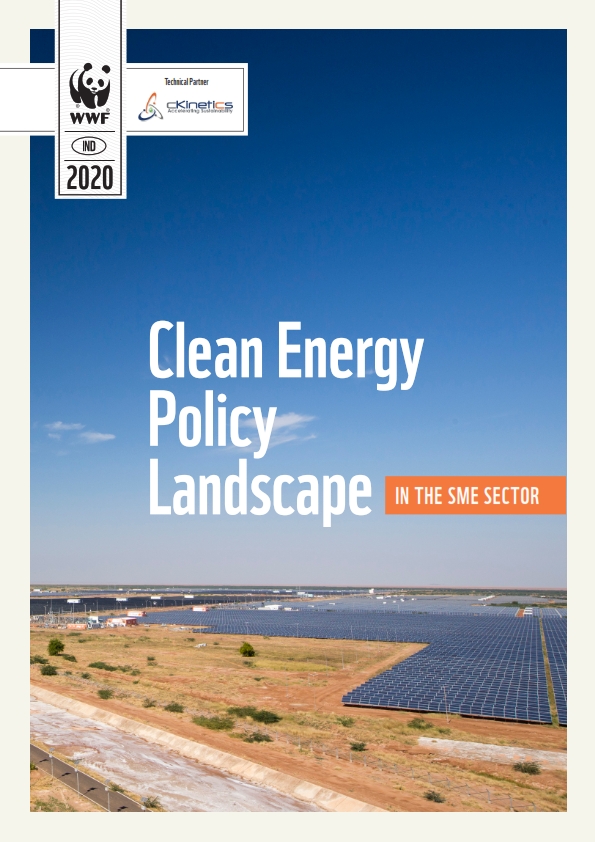
While almost 140 government interventions focus directly or/and indirectly on clean energy and startups and SMEs, only 38 policies actually target SMEs in the clean energy ecosystem, making it difficult for SMEs to reap the benefits of the provisions. Even as the market progression of the different segments in the clean energy sector continues, the potential for SMEs as manufacturers or service providers is restricted as the thrust on the policy front is muted to a large extent. The slowness in the growth trajectory of clean energy segments is hampering the scale of SMEs compared to other start-up focused sectors such as fin-tech or e-commerce.
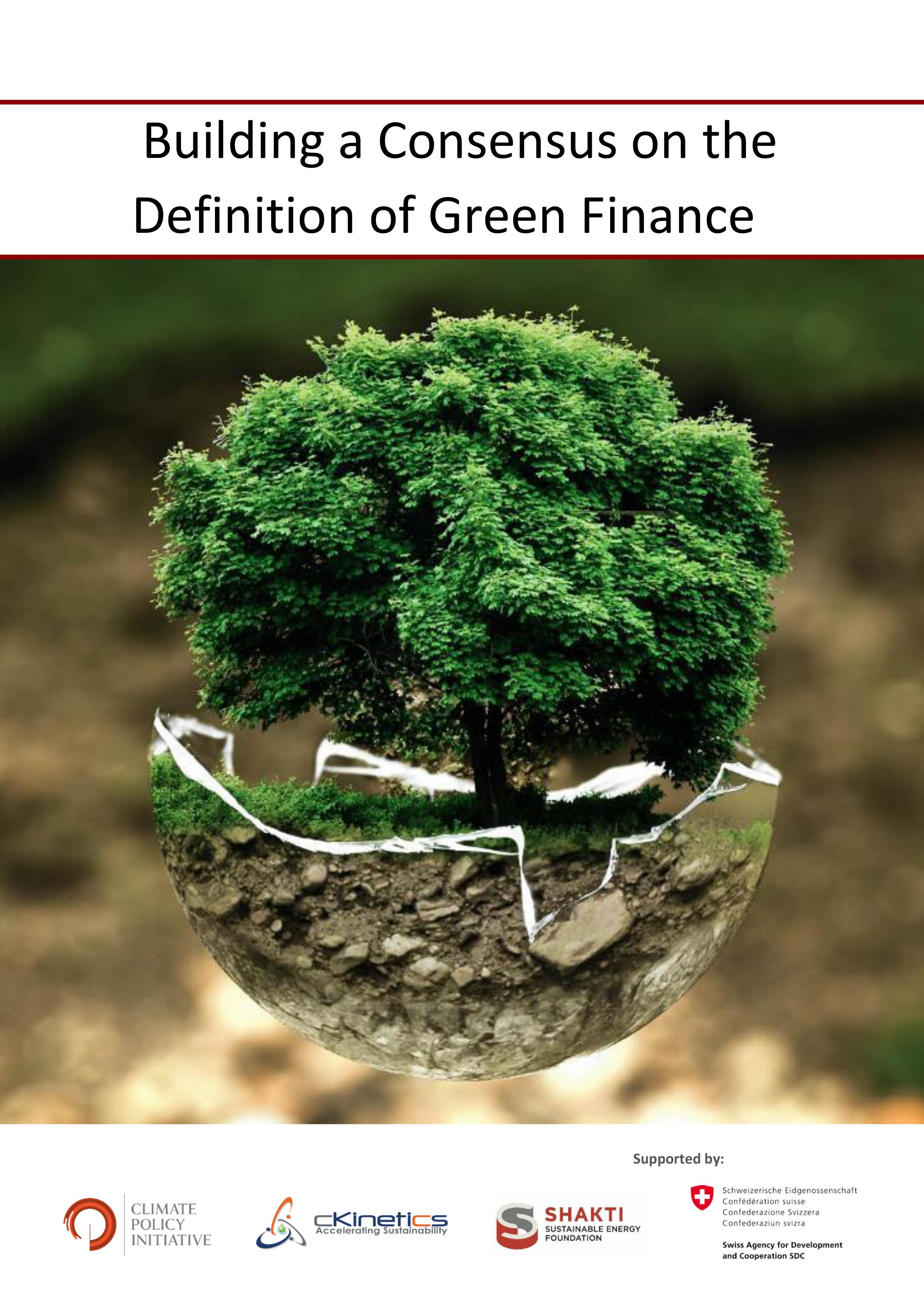
A universally accepted definition of green finance is not available yet, although several initiatives are ongoing across countries as also led by many international organizations. Given that the green priorities vary across countries, the efforts to define green finance are not necessarily aligned with each other even as the focus is on common end-goals. This report has taken the first step in defining “green” in context of India’s NDC commitment and economic goals. A formal definition of green finance relevant to India will set the agenda for progress in the next few decades and help foster an environment of transparency, sharing and commitment to green goals.

This GOGLA-commissioned report reveals that the overall private player driven market (for standalone solar products) is estimated to grow by two to three times to reach INR 16,468 million (USD 206 million) to INR 26,178 million (USD 327 million) by 2023. Most of the future sales are estimated to come from lanterns with additional services (like mobile charging, radio, etc.) and solar home systems. Increasing incomes and greater energy demand are amongst key drivers. Solar home systems, particularly with higher wattages (ranging from 100 Wp to 400 Wp) are expected to increase. The growth will come mainly in the states of Jammu and Kashmir, Chhattisgarh, Jharkhand, Arunachal Pradesh, Uttar Pradesh, Bihar and Mizoram where there is increased electrification but outages are likely to remain for the next few years. The Indian government has shifted its focus towards the solar pumping segment. This segment received a fillip in March 2018 with the announcement of the KUSUM scheme wherein a key component is to setup 1.75 million off-grid solar pumps by 2022: nearly ten times the number of current installed pumps.
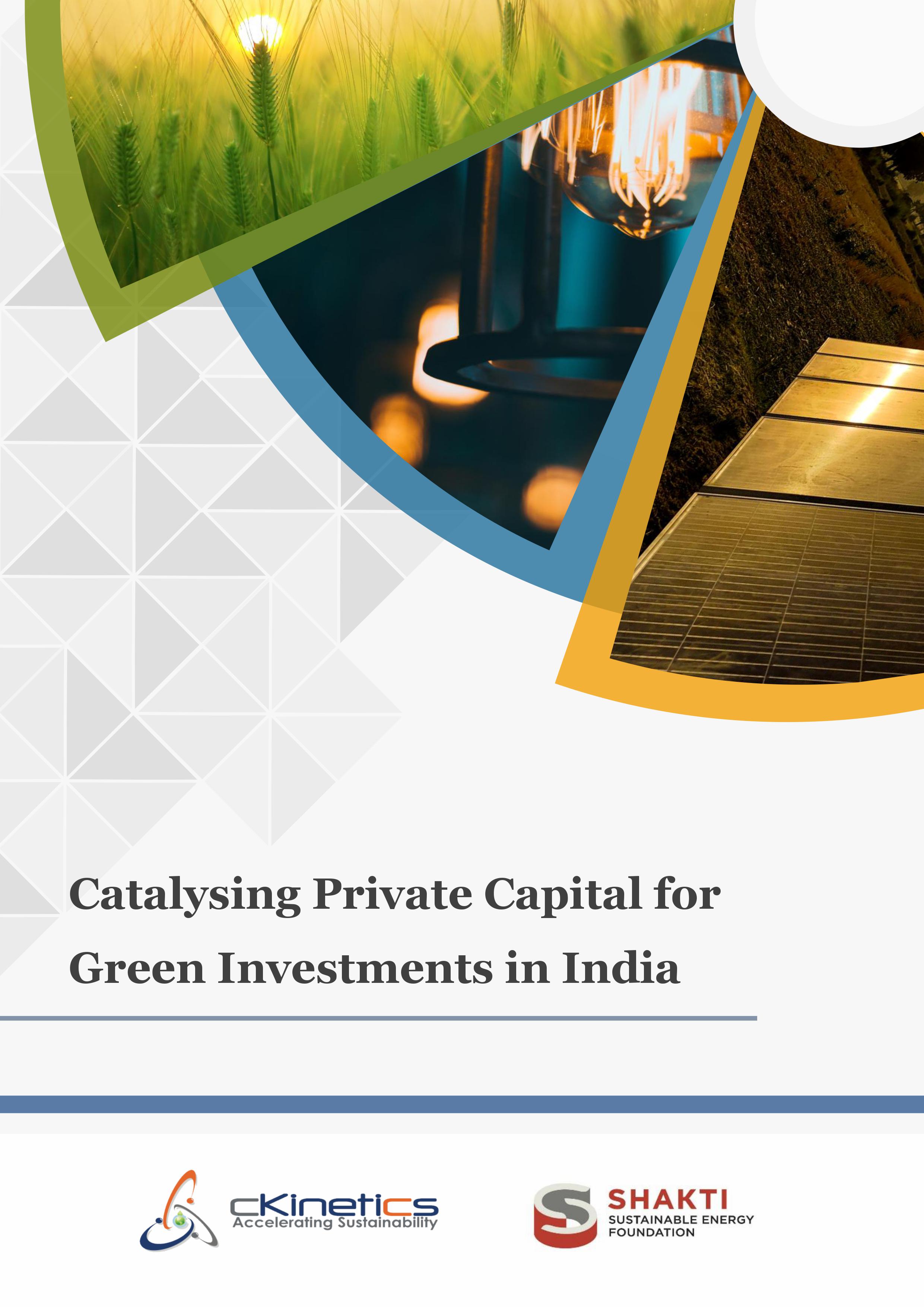
Climate finance takes its roots in the ever-intensifying debate about the health of our planet and actions being undertaken (or planned) by countries, cities and companies to keep it habitable for future generations. Financing for climate change mitigation and adaptation efforts is a global, complex, political and economic issue. While there is sufficient scientific consensus on climate change, mobilizing finance is key to unlocking action on climate change. In recent years, Sustainable and Responsible Investing (SRI) has emerged as a key investment trend globally. SRI includes strategies like screening of companies/sectors by their environmental impact; sustainability themed investing such as investing in clean energy or sustainable agriculture for example; and leveraging of one's power as an equity holder to guide corporate business activity or the behavior of investee companies. This report takes the perspective of investors with the objective of capturing the significance of the conflation between green/climate finance and SRI, and to recommend steps for enabling climate finance.

India is estimated to require nearly USD 95 to 125bn annually through 2033 for actions on climate mitigation. This entails investment to support transition of existing sectors into green and nurturing emerging sectors and technologies in areas such as electric vehicles, green buildings, renewable energy, waste and water resources. Public finance will continue to play a key role in supporting this transition – addressing around 20% of the total investment needs. However, in order to ensure a timely response to climate change, the private sector will need to play a leading role. This guidebook is designed to provide a flexible, non-prescriptive guidance for financial institutions (investors and lenders) helping them realize potential to climate-align activities, consider ‘green’ as a core dimension to business strategy and taking a deeper view of environmental risks beyond compliance.
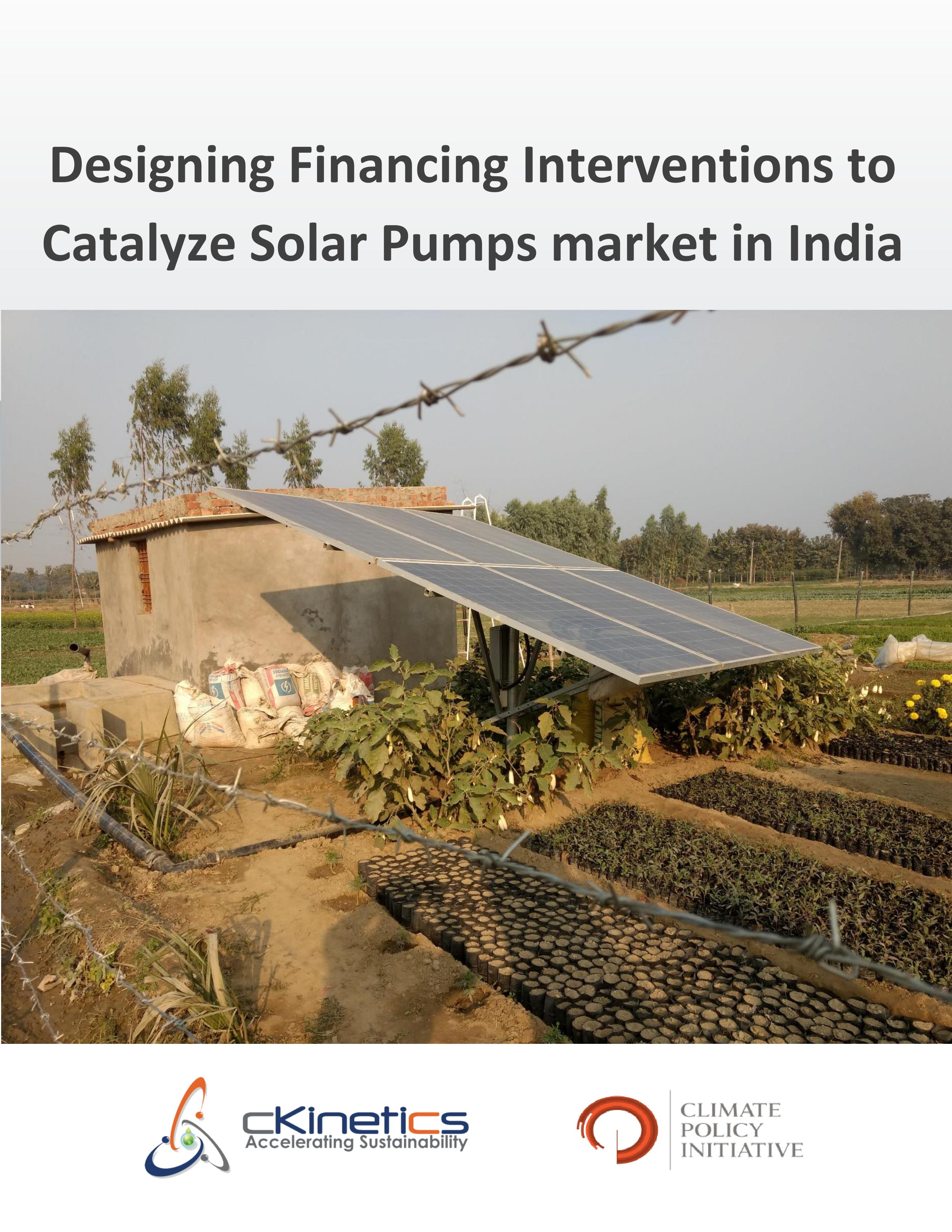
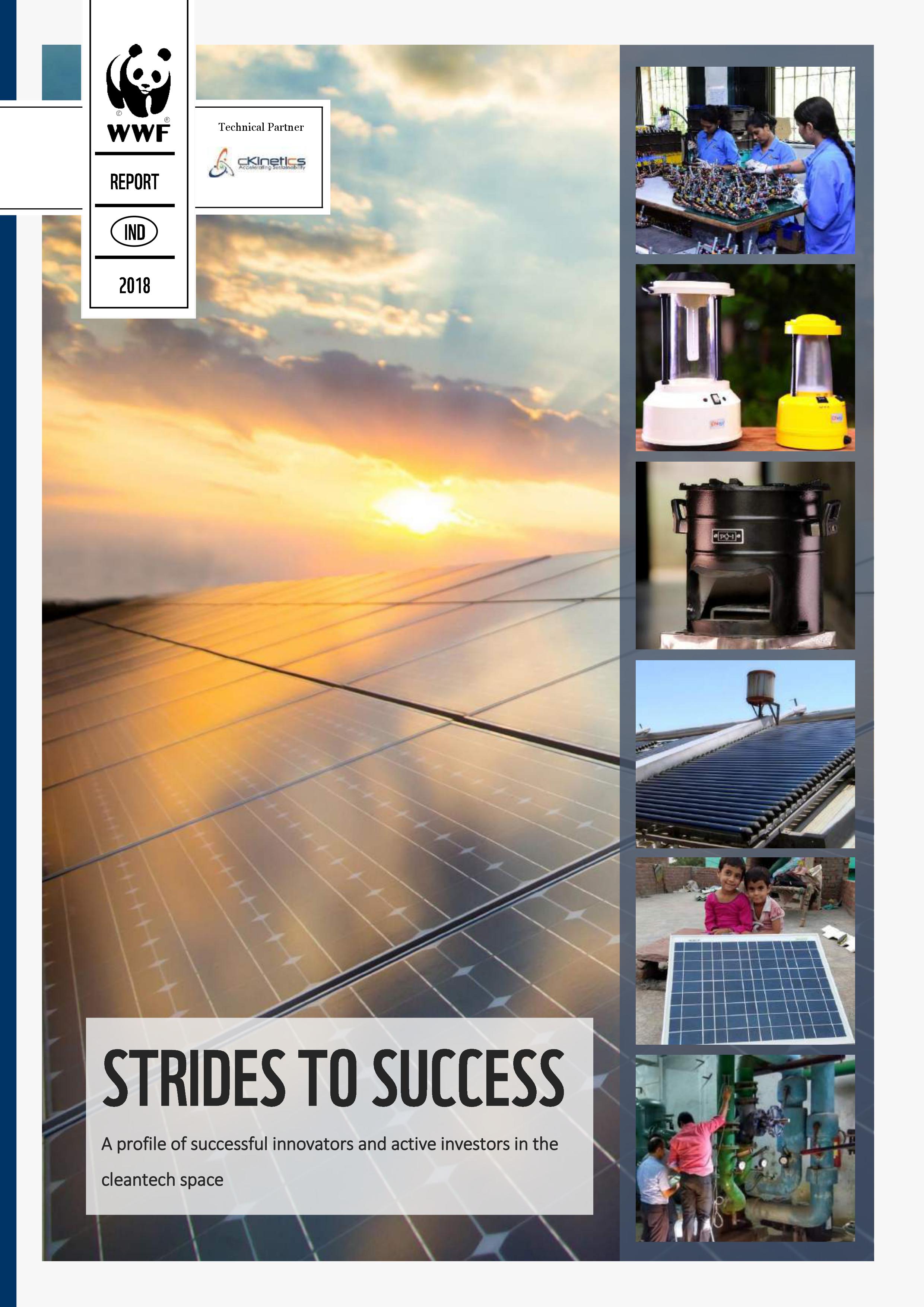
India is committed to contributing to the global low carbon growth agenda. By 2030, India intends to reduce the emissions intensity of its GDP by 33% to 35% from 2005 levels by focusing on diversifying and growing its energy portfolio to reduce its carbon emissions and support the sustainable growth of the economy. Low-carbon transition requires the development of new innovative products, processes and services, presenting an exciting opportunity for cleantech innovators. Despite the market opportunity, the journey of a venture from the stage of ideation to commercialization is demanding and challenging. To ensure that ventures in these emerging sectors scale in line with the demand landscape, access to appropriate financing is key. This report synthesizes the key learnings shared by innovators for gaining traction with the investors, simultaneously revealing the views of the investor community on aspects that are critical to the success of an enterprise. The report ‘Strides to Success’ released as part of WWF India Climate Solver platform’s ongoing ecosystem support activities, will help innovators understand the availability of capital at different growth stages. The case studies outlining the capital raising efforts of successful innovators and the repository showcasing the active financiers in the climate innovation ecosystem have also been highlighted in the report.
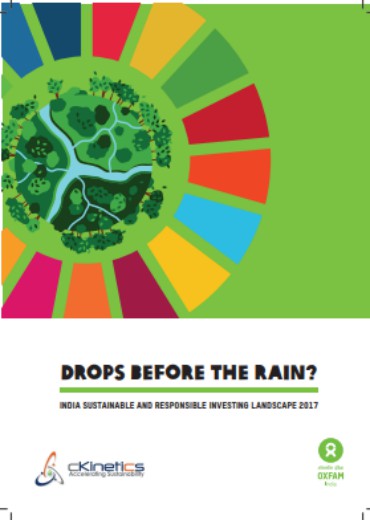
‘Drops before the rain? - India Sustainable and Responsible Investing Landscape 2017’ details the current landscape of Sustainable and Responsible Investment (SRI) and investor perceptions on the sustainable and responsible investing in India. Globally, the assets deployed with SRI strategies stands at $22.89 trillion (₹1476 trillion). The report estimates the capital deployed with SRI strategies to be around ~$30 billion (₹1,962 billion) in India.
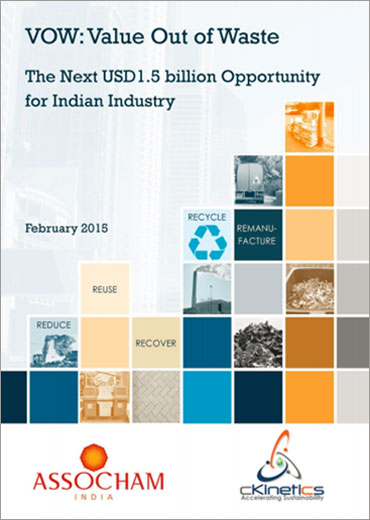
The report ‘Value out of Waste: the USD 1.5 Billion opportunity for India’ authored by sustainability advisory firm, Sustainability Outlook(a division of cKinetics) and Industry body ASSOCHAM, provides insights into the value that can be generated from urban municipal solid waste as also the potential opportunity this represents for the Indian industry.
As per the report, composting and waste to energy present significant opportunity for generating value out of waste in the country. The report estimates the potential for processing waste for conversion into energy at around 956 MW by 2017 and likely to touch levels of 2200 MW by 2030 and 5400 MW by 2052 due to technological improvements, improved waste segregation and waste management systems. Given the high organic content in Indian urban municipal waste, less upfront capital expenditure, as well as ease of adoption in decentralized setting, composting is also expected to grow from about 26,000 TPD in 2017 to 66,500 TPD in 2052. The report also highlights the key policy, financial and business aspects that would need to be addressed to realize this potential.

Based on industry conversations, it is expected that 65-70% of the Designated Consumer (DC) units would be able to mee t the PAT targets under first cycle. By a conservative estimate, 5200 million KWh of energy has been saved due to measures undertaken by DCs under the PAT mandate. This equates into an avoided expenditure on energy of at least INR 5500 crore resulting from the measures undertaken by DCs in the PAT sectors. The actual energy savings and avoided investment cost could actually be even higher, and would come to light once the measurement and verification (M& V) of energy savings realized by the DCs is completed.
Some experts are of the view that setting data management systems in place for DCs is far more challenging than actual project implementation in some cases. There is a need for a robust data management system in PAT to ensure transparency, acceptability, measurability, traceability and verifiability.
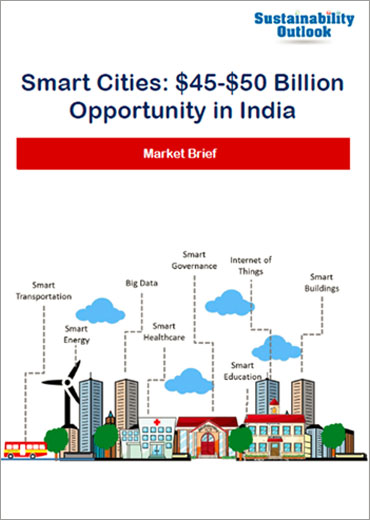
Smart Cities’ is the new buzzword in the Indian Infrastructure and development space. While we may have an inkling of what it may represent, there is a lot of fuzziness surrounding the concept of smart cities, the benefits they may bring and particularly, the level or investment and business potential they represent in India.
To demystify the opportunity represented by smart cities, Sustainability Outlook has developed a Smart Cities Opportunity Assessment Model. This model pegs the opportunity for smart cities in India at USD 45-50 billion over the next 5 years. This opportunity primarily pertains to four focus areas - Smart Energy, Smart Transportation, Smart Water Management and Smart Waste Management. With multiple interventions considered under each focus area, smart energy and smart water management account for the lion’s share in terms of potential business opportunity in India estimated to be USD 14.4 billion and USD 23.4 billion respectively.
Energy, water management, transportation and waste management were identified as the sectors of focus for the first version of the Smart Cities Opportunity Assessment Model. These sectors were chosen since they are facing or likely to face the biggest challenges in the near future due to growing population, urbanization, increasing resource shortage and environmental concerns. Hence, the need as well as scope for improving efficiency through smartness in these sectors is also the highest.
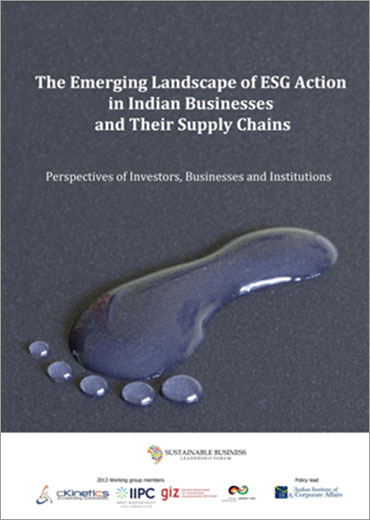
This research study was done by the working group on sustainability disclosure and reporting under the Sustainable Business Leadership Forum (SBLF) which analyzed the changing landscape and actions by Indian businesses and their supply chain surrounding Environmental, Social and Governance (ESG) parameters found increased management of impact metrics related to ESG but the lack of disclosure of performance regarding the same. This new focus on measuring, managing and disclosing non-financial metrics comes amidst an increasing demand from global customers and investors for ESG data as well as greater regulatory interest. This work was an outcome of the work by the Indian Institute of Corporate Affairs (Policy Lead), cKinetics, Deutsche GesellschaftfürInternationaleZusammenarbeit (GIZ), and the Impact Investment Policy Collaborative (in association with the Initiative for Responsible Investment at Harvard University) who had convened a working group to facilitate a conversation about the expectations, concerns, challenges and realities surrounding ESG measurement/management/disclosure in the Indian market.
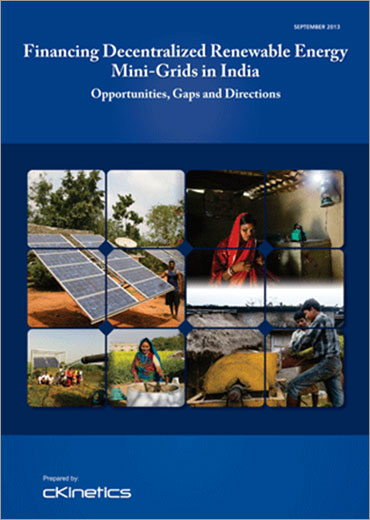
DRE Financing Decentralized Renewable Energy (DRE) based rural electrification is a rapidly emerging sector in India. Investors are just beginning to understand the business model, commercial viability, risks and opportunities that this sector presents. This cKinetics report provides a perspective on opportunities, gaps and directions for financing in this emerging sector. It is not only meant to be a primer but also serve as a resource guide. Analysis of the top 4 states in India which are most deficient in electricity supply (namely Bihar, Uttar Pradesh, Odisha and Jharkhand) reveals that there exists an immediate power requirement of atleast 553MW in around 30,000 villages which can be met through rural DRE mini-grids.The capital requirement to meet this potential demand is estimated to be ranging from USD 922 million to USD 12.7 billion depending on the scenario chosen for potential electricity consumption by rural households. In an on-going exercise through 2013 and 2014, cKinetics is leading an effort to identify pathways to bridge the apparent mismatch and gap between the supply of capital and the (known) demand of capital for rural DRE mini-grids.
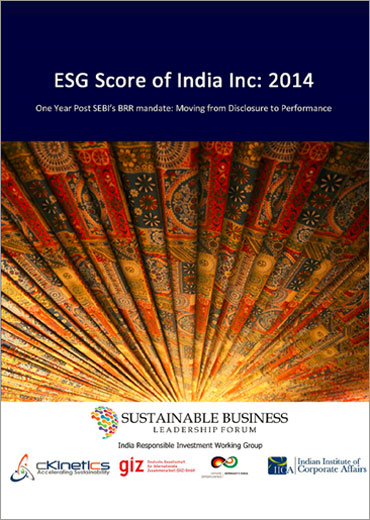
Sustainability disclosure and reporting in India has received a fillip in the last couple of years. It has been driven to large extent by investors and policy makers. The Sustainability Leadership Forum has been working closely with businesses, investors, catalyst organizations and policy makers to identify the link between investment/capital flows and Environmental and Social (E&S) disclosure in India and have an integrated conversation about the expectations, concerns, challenges and realities surrounding ESG measurement/ management/ disclosure in the Indian market.
As part of the Sustainable Business Leadership Forum, we develop an annual scorecard of India Inc which analyses trends on ESG disclosure and reporting of over 120 large businesses in India – to inform investors on the ESG performance and risks of their stocks.
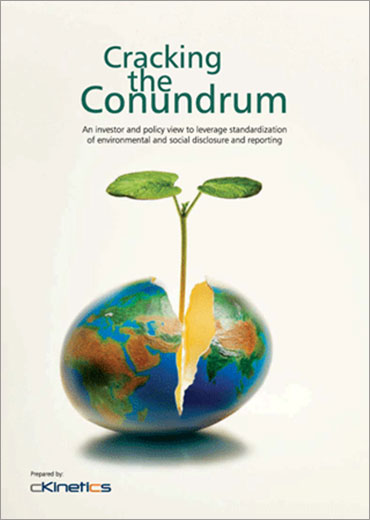
‘Cracking the Conundrum’ details how investors can converge to crack the key conundrum of standardization of E&S disclosure and reporting: ‘a standard will get accepted only if it has a large number of adopters, however adoption will only happen if a standard gets accepted’. As per the latest estimates developed by cKinetics, these investors (referred to as Finance+ investors) represent Rs 3 trillion ($55 billion) in India, which is 1% of the world’s total responsible capital. In addition to this, Indian and Global banks are lending Rs 4.4 trillion ($80 billion) to sectors, in which E&S factors are considered. The report makes the case that as standardization of E&S reporting occurs, investors that have adopted it will increasingly interact amongst themselves. Their Assets Under Management (AUM) is expected to grow from Rs3 trillion ($55 billion) presently to Rs5.5 trillion - Rs9.6 trillion ($100 billion - $175 billion) in 5 years and forecasted to be at Rs13.2 trillion - Rs17.3 trillion ($240 billion - $315 billion) in 10 years.
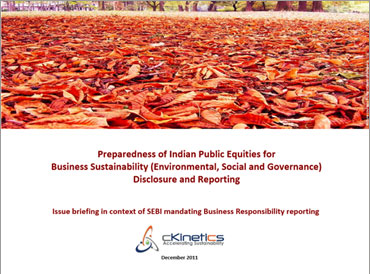
 Click here to download the Preparedness of Indian corporates
Click here to download the Preparedness of Indian corporates
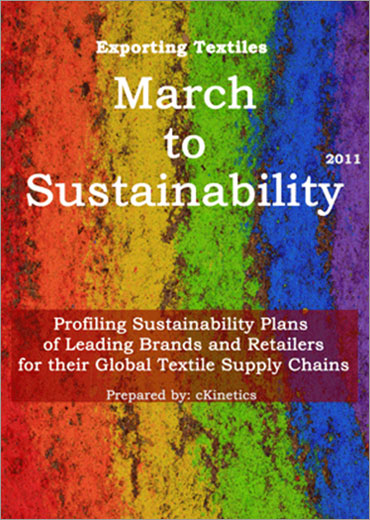
cKinetics has come out with a report “Exporting Textiles: March to Sustainability” that maps supply chain sustainability initiatives by global brands and retailers in their textile procurement process.
The focus of the report is on initiatives and targets being set by the brands and retailers for their supply chain: